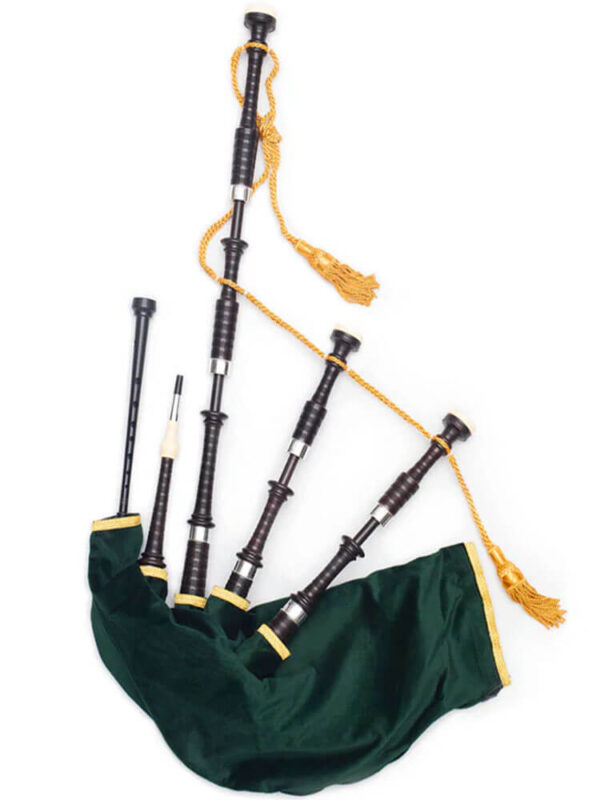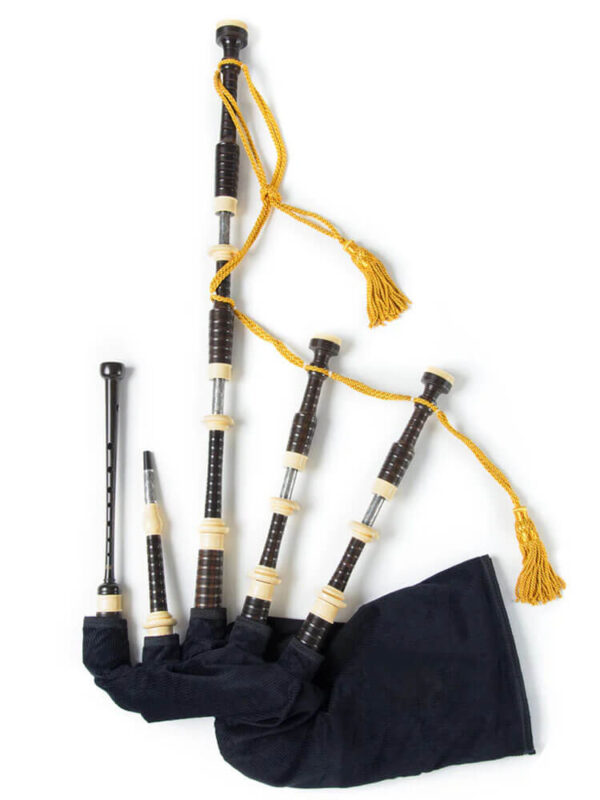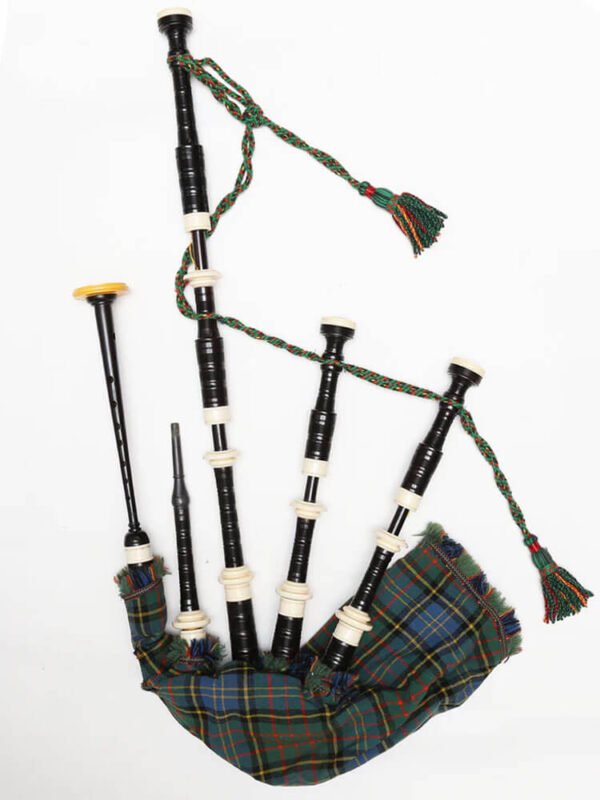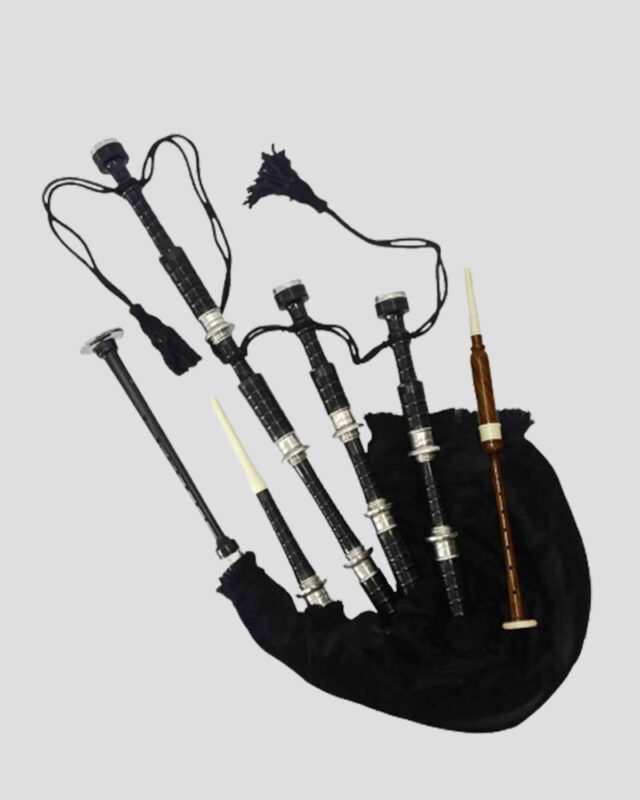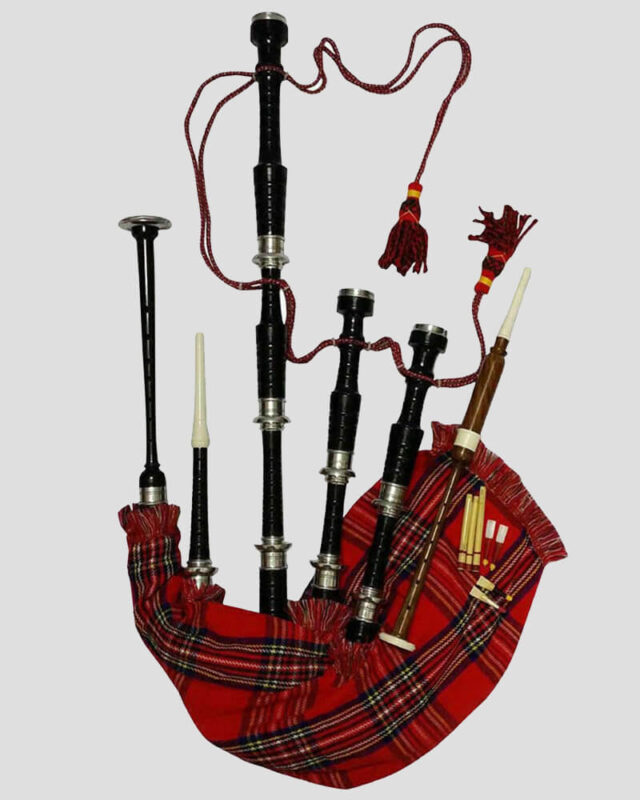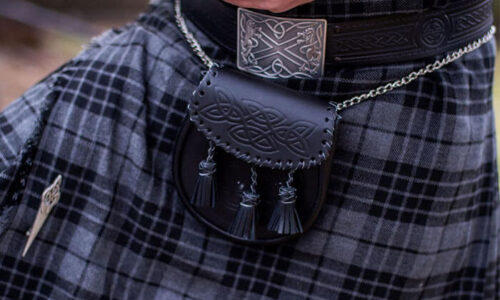Bagpipes are often associated with Scotland, but did you know they also have a rich history in Ireland? While most people think of bagpipes as distinctly Scottish, the reality is that both Scotland and Ireland have their own unique versions of this iconic instrument. Scottish bagpipes, known for their powerful, resonant sound, are probably what comes to mind first. However, Irish bagpipes, called Uilleann pipes, offer a different style and sound that’s just as captivating. These two types of bagpipes have developed separately over centuries, each reflecting the culture and traditions of their respective countries. So, are bagpipes Scottish or Irish? The answer is both! Each has its own special place in the musical heritage of these Celtic nations. Whether you’re listening to the haunting melodies of the Scottish bagpipes or the softer tones of the Irish bagpipes, you’re hearing a piece of history that’s deeply rooted in the traditions of both Scotland and Ireland.
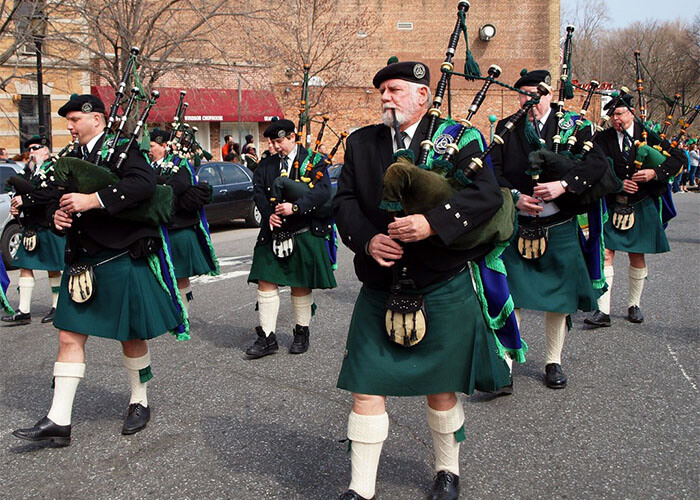
Differences Between Scottish and Irish Bagpipes
When it comes to bagpipes, Scotland and Ireland both have rich traditions, but the instruments from these two countries are distinct in several ways. The differences between Scottish and Irish bagpipes are rooted in their construction methods, sound, and the cultural contexts in which they are used. Understanding these differences helps to appreciate the unique qualities each type of bagpipe brings to Celtic music.
Scottish Bagpipes: Sound and Structure
Scottish bagpipes, particularly the Great Highland Bagpipe, are the most recognized worldwide. They produce a powerful, resonant sound that is often associated with military marches and large gatherings. The construction methods used for Scottish bagpipes involve a large, sturdy bag made of animal hide or synthetic materials, three drones (which produce a constant background harmony), and a chanter for playing the melody. The pipes are tuned to a fixed scale, making them ideal for outdoor performances where their bold, penetrating sound can carry over long distances.
Irish Bagpipes: Delicate and Complex
In contrast, Irish bagpipes, or Uilleann pipes, have a softer, more intricate sound. These pipes are designed for indoor playing and offer a greater range of notes and dynamics. The construction methods for Irish bagpipes include a smaller bag, a bellows used to fill the bag with air, and a set of regulators that allow for chordal accompaniment. This makes Uilleann pipes highly versatile, capable of producing both haunting slow airs and lively dance tunes.
Key Differences:
- Air Supply: Scottish bagpipes are mouth-blown, meaning the player uses their breath to fill the bag with air. In contrast, Irish bagpipes utilize a bellows, which is pumped by the player’s arm, allowing for a more controlled and steady airflow without the need for constant blowing.
- Drones: Scottish bagpipes typically feature three drones—two tenors and one bass—which provide a continuous harmonic background. Irish bagpipes usually have two drones but are enhanced by regulators, which are additional pipes that can be played with the wrist to create harmonies and chords, adding complexity to the music.
- Sound: Scottish bagpipes are known for their loud, piercing sound that can be heard over great distances, making them ideal for outdoor performances, parades, and ceremonies. Irish bagpipes, on the other hand, produce a softer, more melodic sound with greater tonal variation, making them more suitable for indoor settings or intimate performances.
Understanding the construction methods and differences between Scottish and Irish bagpipes not only highlights their unique characteristics but also deepens our appreciation for the cultural traditions that shaped these iconic instruments. Each type of bagpipe reflects the environment, history, and musical preferences of its homeland, contributing to the rich tapestry of Celtic music.
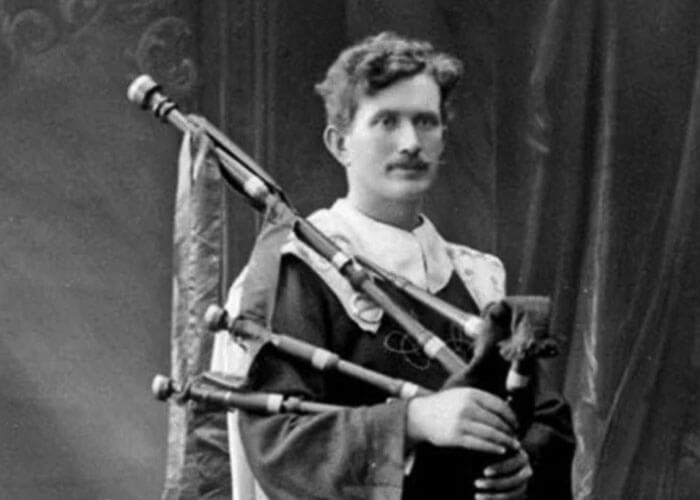
History of Bagpipes
Bagpipes have a long and fascinating history that stretches back thousands of years. While they are most commonly associated with Scotland, their origins are much older and more widespread. The earliest known references to bagpipes date back to ancient civilizations such as Egypt and Mesopotamia, where early forms of the instrument were used in various ceremonies. These early bagpipes were quite different from the modern versions we know today, often made from simple materials like reeds and animal skins. Over time, the bagpipe spread across Europe, with each region developing its own unique variation.
By the Middle Ages, bagpipes had become popular across Europe, including in countries like France, Spain, and Italy. However, it was in Scotland and Ireland where the bagpipes truly became a cultural icon. The Scottish Great Highland Bagpipe, as it is known today, began to take shape in the 16th century. It became an integral part of Scottish culture, used in both war and peace, from leading soldiers into battle to marking celebrations and ceremonies. In Ireland, the Uilleann pipes emerged, offering a softer, more melodic sound compared to their Scottish counterpart. Both types of bagpipes became symbols of national pride and identity, deeply rooted in the traditions of their respective countries.
The popularity of bagpipes continued to grow, with the instrument becoming a symbol of resistance and cultural identity, especially during times of political turmoil. In Scotland, the playing of bagpipes was even banned for a time after the Jacobite uprisings, as it was seen as an instrument of war. Despite these challenges, bagpipes survived and thrived, becoming a beloved part of folk music traditions in Scotland, Ireland, and beyond. Today, bagpipes are celebrated around the world, not only as musical instruments but as cultural treasures that connect us to the past.
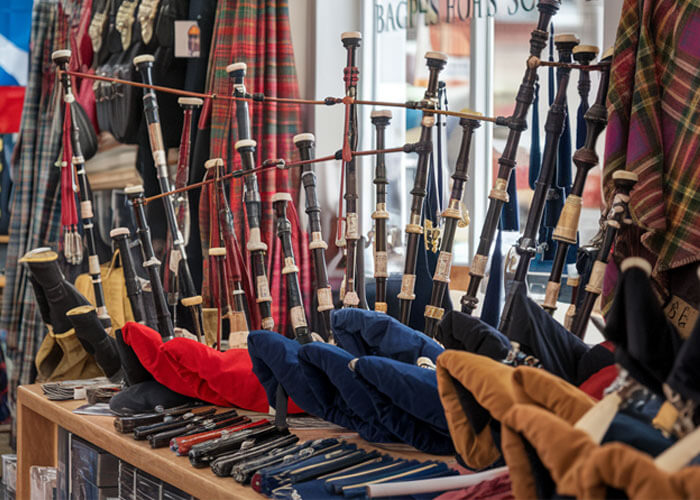
Types of Bagpipes: A Complete List & Guide
- Great Highland Bagpipe (Scotland)
- Uilleann Pipes (Ireland)
- Gaita (Spain)
- Northumbrian Smallpipes (England)
- Zampogna (Italy)
- Biniou (Brittany, France)
- Gaida (Bulgaria, Macedonia, Greece)
- Pibgorn (Wales)
- Dudy (Czech Republic, Poland)
- Cornemuse (France)
- Säckpipa (Sweden)
- Tsampouna (Greece)
- Scottish Smallpipes (Scotland)
- Border Pipes (Scotland/England)
- Musette de Cour (France)
Bagpipes are one of the most iconic and culturally significant instruments in the world, known for their distinctive sound and deep historical roots. While many people immediately think of Scotland when they hear the word “bagpipes,” the instrument’s history and variations extend far beyond the Scottish Highlands. Bagpipes have been an integral part of the musical traditions of many countries across Europe and beyond, each with its own unique style, construction, and cultural significance. In this blog, we’ll delve into the rich diversity of bagpipes by exploring some of the most notable types from around the world, highlighting their unique characteristics and historical backgrounds.
These bagpipes vary greatly in the
1. Great Highland Bagpipe (Scotland):
The most famous and widely recognized bagpipe, the Great Highland Bagpipe is synonymous with Scottish culture. Known for its powerful, resonant sound, this bagpipe has been used for centuries in ceremonies, military processions, and folk music. It typically features three drones and a chanter, and it is played by blowing air into a bag through a blowpipe. The Great Highland Bagpipe is a symbol of Scottish identity and pride, often heard at events such as Highland games, weddings, and national celebrations.
2. Uilleann Pipes (Ireland):
The Uilleann pipes are the national bagpipe of Ireland, distinguished by their soft, melodic sound. Unlike the mouth-blown Great Highland Bagpipe, Uilleann pipes are bellows-blown, allowing for greater control over the sound. They have a wider range and more complex fingering, making them suitable for playing intricate melodies. Uilleann pipes are often associated with traditional Irish music and are considered one of the most challenging types of bagpipes to master.
3. Gaita (Spain):
The Gaita is a traditional bagpipe found in various regions of Spain, including Galicia, Asturias, and Cantabria. Each region has its own variation of the Gaita, with differences in tuning, construction, and playing style. The Gaita typically has one or two drones and a chanter, producing a rich, reedy sound that is integral to the folk music of these regions. The Gaita is often played at festivals, processions, and traditional dances, making it a key element of Spain’s cultural heritage.
4. Northumbrian Smallpipes (England):
Originating from the Northumberland region of England, the Northumbrian smallpipes are a bellows-blown bagpipe known for their soft, delicate sound. Unlike many other bagpipes, the Northumbrian smallpipes have a closed-end chanter, which allows the player to control the sound more precisely, creating a staccato effect. These pipes are often used in traditional English folk music and are prized for their sweet, mellow tone.
5. Zampogna (Italy):
The Zampogna is a traditional Italian bagpipe with roots in rural and pastoral traditions. It is particularly associated with the regions of southern Italy, where it is often played by shepherds during the Christmas season. The Zampogna features double chanters and drones, creating a harmonious, polyphonic sound. It is commonly used to accompany the traditional Italian Christmas song “Tu scendi dalle stelle” and other folk melodies.
6. Biniou (Brittany, France):
The Biniou is a small, high-pitched bagpipe from Brittany, a region in northwestern France. It is usually played in conjunction with the bombard, a traditional Breton woodwind instrument. The Biniou’s piercing sound is a staple of Breton folk music, particularly in traditional dances known as fest-noz. The instrument’s bright, lively tone adds a distinctive flavor to the music of Brittany.
7. Gaida (Bulgaria, Macedonia, Greece):
The Gaida is a Balkan bagpipe found in Bulgaria, Macedonia, and parts of Greece. It is characterized by its single drone and chanter, and its sound is closely tied to the folk music traditions of the region. The Gaida is often played at weddings, festivals, and other celebrations, providing a lively, rhythmic accompaniment to dancing and singing.
8. Pibgorn (Wales):
The Pibgorn is a traditional Welsh pipe that dates back to medieval times. It is made from a hollowed-out piece of wood or animal horn and produces a distinctive, nasal tone. Although not a bagpipe in the traditional sense, the Pibgorn is often associated with the same historical and cultural contexts as other bagpipes. It is used in Welsh folk music and has seen a revival in recent years as musicians seek to preserve and promote traditional Welsh instruments.
9. Dudy (Czech Republic, Poland):
The Dudy is a type of bagpipe found in Central Europe, particularly in the Czech Republic and Poland. It has a rich, full sound and is used in folk music and dance traditions. The Dudy typically features a single drone and chanter, and it is often decorated with intricate carvings and designs. The instrument plays a central role in the folk culture of the region, often accompanying lively dances and communal celebrations.
10. Cornemuse (France):
The Cornemuse is a French bagpipe with a deep, resonant sound, particularly associated with the central regions of France, such as Bourbonnais and Auvergne. The instrument has a long history and is used in traditional French folk music. The Cornemuse typically features one or more drones and a chanter, and its sound is often described as both haunting and majestic.
11. Säckpipa (Sweden):
The Säckpipa is a traditional Swedish bagpipe with a unique, nasal tone. It is a simpler instrument compared to some other bagpipes, typically featuring a single drone and chanter. The Säckpipa is used in Swedish folk music and has experienced a revival in recent years as musicians and enthusiasts work to preserve this unique aspect of Sweden’s musical heritage.
12. Tsampouna (Greece):
The Tsampouna is a Greek island bagpipe, similar in construction to the Gaida, with a distinctive sound that is integral to the traditional music of the Aegean Islands. The Tsampouna is often played at local festivals, weddings, and other celebrations, providing a rhythmic and melodic backdrop to traditional Greek dances.
13. Scottish Smallpipes (Scotland):
The Scottish Smallpipes are a quieter, more intimate version of the Great Highland Bagpipe. They are bellows-blown and have a softer, mellower tone, making them ideal for indoor performances and solo playing. Scottish Smallpipes are often used in folk music and have gained popularity among pipers who appreciate their versatility and gentle sound.
14. Border Pipes (Scotland/England):
Border Pipes are a type of bagpipe found in the border regions of Scotland and England. They are similar in construction to the Great Highland Bagpipe but have a softer, more subdued sound. Border Pipes are used in traditional folk music and have a rich history in the cultural exchange between Scotland and England.
15. Musette de Cour (France):
The Musette de Cour is a French baroque bagpipe that was popular in the 17th and 18th centuries, particularly in the royal courts. It is known for its sweet, refined sound, which contrasts with the more robust tones of other bagpipes. The Musette de Cour was often used in courtly music and is an example of how bagpipes were adapted for different social and cultural contexts.
These various types of bagpipes demonstrate the incredible diversity and adaptability of this instrument across different cultures and regions. From the thunderous roar of the Great Highland Bagpipe to the delicate melodies of the Uilleann pipes, each type of bagpipe offers a unique musical experience. Whether used in grand ceremonies, folk dances, or intimate performances, bagpipes continue to be a powerful symbol of cultural identity and heritage, connecting us to the rich history and traditions of the past.
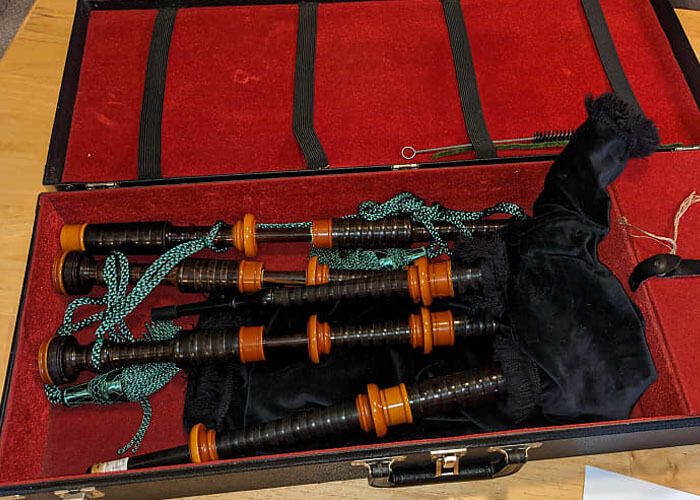
Cost of Bagpipes: A Beginner’s Guide to Pricing
Bagpipes, with their distinctive and resonant sound, have captivated musicians and audiences for centuries. However, for those new to the world of piping, understanding the cost associated with purchasing a bagpipe can be a bit daunting. The price of bagpipes varies widely based on factors such as the type of bagpipe, the materials used, and the level of craftsmanship. This guide aims to provide beginners with a comprehensive overview of what to expect when budgeting for this unique and historic instrument.
1. Types of Bagpipes and Their Costs
The first step in understanding the cost of bagpipes is to familiarize yourself with the different types available and their respective price ranges. Here are some of the most popular types:
- Great Highland Bagpipe: Known for its powerful and commanding sound, the Great Highland Bagpipe is the most recognized type. For beginners, a basic set of Great Highland Bagpipes typically starts around $400 to $600. These entry-level models are often suitable for learning and practice. If you are looking for a more professional-grade instrument, prices can range from $800 to $1,200, and high-end or custom-made sets can exceed $1,500. The cost varies based on the quality of the materials, craftsmanship, and brand reputation.
- Uilleann Pipes: This Irish bagpipe is renowned for its softer, more nuanced sound. Beginner Uilleann pipes usually start at around $800 to $1,200. These pipes are more complex and have a wider range than the Great Highland Bagpipes, and as such, they are generally more expensive. High-quality or custom Uilleann pipes can cost upwards of $2,000. The price reflects the intricate craftsmanship and the use of high-quality materials.
- Scottish Smallpipes: Designed for indoor use, Scottish Smallpipes are quieter and more manageable. Entry-level models generally cost between $300 and $600. As you move towards higher-quality or custom options, prices can rise to $1,000 or more. The Scottish Smallpipes offer a softer sound compared to the Great Highland Bagpipe and are ideal for those who prefer a more subdued tone.
2. Factors Affecting Bagpipe Pricing
Several factors influence the cost of bagpipes, and understanding these can help you make an informed purchase:
Material Quality:
Bagpipes can be made from a range of materials including African Blackwood, plastic, and synthetic materials. Instruments made from premium materials like African Blackwood are generally more expensive due to their durability and superior sound quality. Plastic or synthetic bagpipes are often more affordable and may be a good choice for beginners due to their lower cost and durability.
Craftsmanship:
The level of craftsmanship involved in making the bagpipes significantly impacts their price. Handmade bagpipes from skilled artisans are usually more costly because of the time, skill, and attention to detail involved. Mass-produced or factory-made bagpipes are typically less expensive but may not offer the same level of personalization or fine tuning as custom-made instruments.
Condition and Age:
When considering used bagpipes, their condition and age will play a crucial role in the pricing. Well-maintained vintage bagpipes can offer good value, but potential buyers should be prepared for possible repairs or adjustments. The overall condition of the bagpipes, including the bag, reeds, and chanter, will affect their price.
3. Additional Costs for Beginners
For beginners, it’s essential to factor in additional costs beyond the initial purchase price of the bagpipes:
Lessons and Instruction:
Learning to play the bagpipes correctly is crucial for developing proper technique and making progress. Professional lessons typically cost between $30 and $60 per hour. Many beginners find that investing in a few lessons helps them build a solid foundation and avoid developing bad habits.
Accessories:
In addition to the bagpipes themselves, you will need various accessories to support your learning and maintenance. A practice chanter, which is essential for learning and practicing, usually costs between $30 and $80. Other accessories include maintenance supplies like oil and drone reeds, a carrying case for protection, and possibly a tuning device. These additional items can add up, so it’s important to include them in your budget.
4. Budgeting Tips for Beginners
When budgeting for bagpipes, consider the following tips to manage costs effectively:
Start with a Beginner Model:
Investing in a quality beginner model is a smart way to get started without making a huge financial commitment. Entry-level bagpipes are designed to be affordable and functional, allowing you to learn the basics before considering a more advanced instrument.
Research and Compare:
Take the time to research different brands, models, and sellers. Compare prices and read reviews to ensure you’re getting a good deal and a reliable instrument. Reputable sellers and manufacturers often provide better customer support and warranties, which can be valuable for beginners.
Consider Used Instruments:
If you’re on a tight budget, exploring used bagpipes can be a viable option. Many players sell their instruments in good condition, and you might find a quality set at a lower price. However, make sure to inspect the instrument thoroughly or seek advice from an experienced piper before purchasing a used set.
Plan for Long-Term Costs:
Remember that owning bagpipes involves ongoing costs such as maintenance and replacement of reeds. Budget for these expenses as part of your long-term plan to ensure you can keep your instrument in good working condition.
Understanding the cost of bagpipes and the factors that influence their pricing will help you make a well-informed decision. Whether you’re drawn to the majestic Great Highland Bagpipe, the melodious Uilleann pipes, or any other type, careful consideration and budgeting will ensure you find an instrument that fits your needs and budget. With the right preparation, you’ll be ready to embark on your journey into the world of bagpipes and enjoy the rich musical traditions they offer.
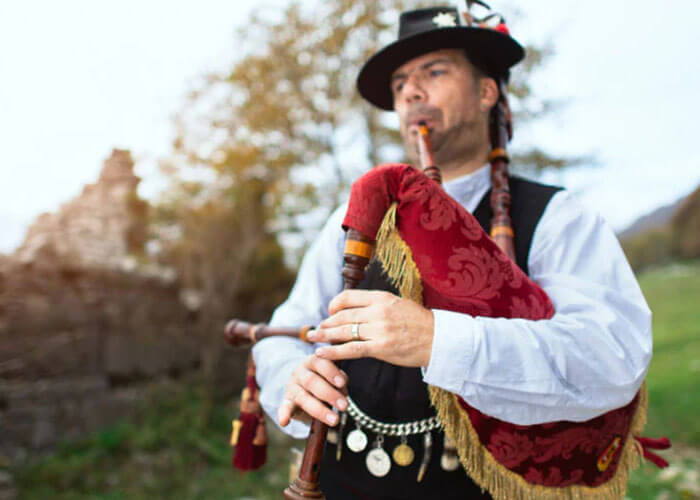
The Basics: How to Play Bagpipes Like a Pro!
Playing the bagpipes can seem daunting at first, but with the right approach and some dedicated practice, you can master this iconic instrument. If you’re keen on learning how to play bagpipes like a pro, understanding the basics is crucial. Here’s a straightforward guide to get you started and set you on the path to becoming a skilled piper.
Start with the Practice Chanter:
Before diving into the full bagpipe setup, it’s essential to begin with a practice chanter. This simpler, single-reed instrument helps you focus on learning the fingerings and melodies without the added complexity of the bag and drones. Imagine it as a training tool; it’s designed to mimic the bagpipe’s sound but in a more manageable form. Spend time getting comfortable with the finger placements and developing your tone. Mastering the practice chanter is like laying the foundation for a house—it sets you up for success when you finally tackle the full bagpipes.
Learn the Basics of Fingering:
Proper fingering is crucial to producing a clear, accurate sound. On the practice chanter, practice moving your fingers smoothly between notes. Think of it like learning to type—muscle memory and accuracy are key. Make sure you’re covering the holes fully and using the correct finger positions. A consistent and relaxed grip will help you avoid unnecessary strain. Start with simple scales and tunes to build up your dexterity and get your fingers accustomed to the movements.
Understand the Bagpipe Setup:
Once you’re comfortable with the practice chanter, it’s time to learn about the full bagpipe setup. The bagpipes consist of a bag, drones, and a chanter. The bag is where the air is stored, which is then pushed through the drones and chanter to produce sound. Assembling and maintaining the instrument can be a bit like putting together a complex puzzle. Make sure you’re familiar with each component and how they work together. Proper assembly and tuning are essential for a balanced, pleasing sound.
Develop Your Breathing Technique:
Breathing technique is critical when playing bagpipes. Unlike other wind instruments, bagpipes use a continuous airflow, so managing your breath is key. Practice using the bag to maintain a steady pressure while you play. Picture it as controlling a steady stream of water from a hose; you need to regulate the flow to keep everything smooth. Good breathing habits will help you produce a consistent sound and improve your playing endurance.
Practice Regularly and Consistently:
Becoming proficient on the bagpipes requires regular practice. Think of it as training for a marathon; the more you practice, the better you get. Set aside dedicated time each day for practice, starting with shorter sessions and gradually increasing as you build stamina. Consistent practice will help you develop muscle memory and improve your technique. The more you play, the more natural it will feel.
Seek Guidance and Feedback:
Consider taking lessons from an experienced piper or joining a local bagpipe group. Getting feedback from a skilled player is like having a coach who can guide you and correct any mistakes early on. Engaging with other pipers can also provide motivation and support, making your learning journey more enjoyable and less isolating.
By following these steps and committing to regular practice, you’ll be well on your way to mastering the bagpipes. With patience and dedication, you’ll soon find yourself playing this remarkable instrument like a pro.
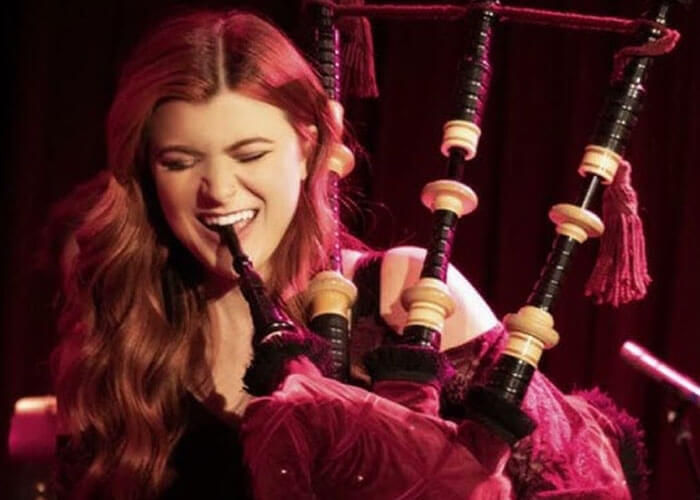
How Do Bagpipes Work?
Bagpipes are a unique and iconic instrument known for their distinctive sound, but many people are curious about how they actually work. At the heart of the bagpipes is the bag itself, which acts as a reservoir for air. The bag is traditionally made from animal hides like sheepskin, although modern versions often use synthetic materials. To play the bagpipes, the player inflates the bag by either blowing into it through a blowpipe or using bellows. Once the bag is full, it is squeezed under the player’s arm to force air through the pipes. This steady stream of air is what powers the entire instrument.
The drones are the long pipes that stick out from the bagpipes, usually three in total. These drones produce the continuous, harmonious background sound that is so characteristic of the bagpipes. Each drone is tuned to a specific pitch, and they work together to create a rich, resonant tone that underpins the melody. The drones are designed to produce a constant sound, which is maintained as long as the air pressure from the bag remains steady.
The chanter is the pipe on which the player creates the melody. It has finger holes similar to a flute or recorder, and by covering and uncovering these holes, the player can produce different notes. The chanter is fitted with a reed, which vibrates as air is passed through it, producing the distinctive sound of the bagpipes. The combination of the melody from the chanter and the drone sounds from the other pipes gives the bagpipes their unique musical identity.
Key Points to Remember:
- Bag Functionality: The bag stores air and maintains a steady flow, ensuring continuous sound production.
- Drone Operation: Drones produce a harmonious background note, tuned to specific pitches.
- Chanter Use: The chanter is where the melody is played, with the player using finger holes to create different notes.
- Steady Airflow: Maintaining consistent pressure on the bag is crucial for a smooth and uninterrupted sound.
Understanding how these components work together can help demystify the bagpipes and highlight the skill required to play them. Each element of the bagpipes plays a vital role in producing the full, rich sound that has made this instrument a symbol of musical tradition and cultural pride. The art of playing the bagpipes requires not only technical skill but also a deep understanding of how to manage the instrument’s airflow and tuning. With practice and dedication, the intricate workings of the bagpipes can be mastered, allowing players to create the powerful and moving music that has echoed through centuries.
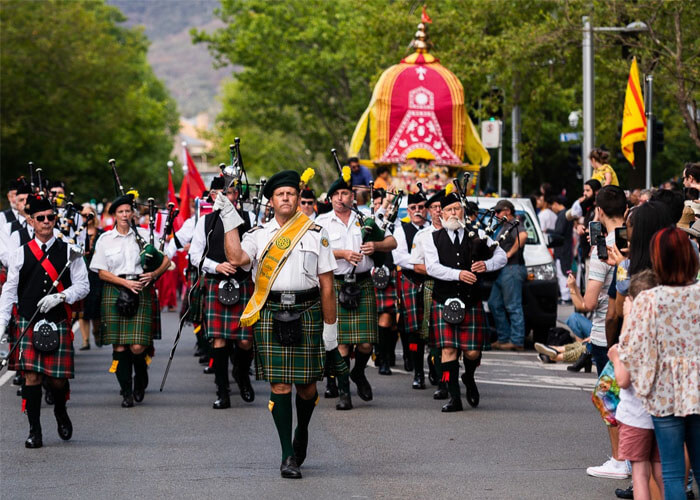
Celebrating Diversity: The International Bagpipe Festival
The International Bagpipe Festival is a vibrant celebration of bagpipe culture, bringing together enthusiasts from around the world to honor this unique and historic instrument. Held annually on International Bagpipe Day, this festival showcases the diversity and rich traditions associated with bagpipes, spanning various cultures and regions. From the Scottish Highlands to the hills of Bulgaria, bagpipes have a deep-rooted presence, and the festival is a testament to their enduring legacy and global appeal.
One of the most captivating aspects of the festival is the array of performances by bagpipers from different countries. Each performance highlights the distinctive styles and sounds of bagpipes from various traditions, such as the Great Highland Bagpipe of Scotland, the Uilleann Pipes of Ireland, and the Gaita from Spain. The festival isn’t just about showcasing music; it’s a cultural exchange where attendees can learn about the history and significance of bagpipes in different parts of the world. This gathering is not only a treat for music lovers but also an educational experience that deepens appreciation for the instrument’s role in global heritage.
The festival also features workshops, where both beginners and seasoned players can hone their skills and learn new techniques. These workshops are led by expert pipers who share their knowledge and passion, making it an excellent opportunity for participants to improve their playing. Additionally, the event includes lectures and discussions on the evolution of bagpipes, their construction, and the role they play in various cultural rituals and ceremonies. Such events foster a sense of community among participants and emphasize the importance of preserving and promoting bagpipe traditions.
Festival Highlights:
- Cultural Performances: Enjoy bagpipe music from diverse cultures, each with its unique style and sound.
- Workshops for All Levels: Learn from expert pipers and improve your skills, whether you’re a beginner or an experienced player.
- Lectures and Discussions: Gain insights into the history, construction, and cultural significance of bagpipes.
- Community Building: Connect with fellow enthusiasts and celebrate the shared passion for this remarkable instrument.
- Instrument Exhibitions: Explore various types of bagpipes and learn about their unique features and craftsmanship.
International Bagpipe Day and its associated festival are more than just a celebration of music; they are a celebration of cultural diversity and the enduring power of tradition. Whether you are a seasoned piper or simply an admirer of this unique instrument, the festival offers something for everyone, making it a must-attend event for anyone interested in the world of bagpipes. The International Bagpipe Festival not only honors the past but also looks to the future, ensuring that the legacy of bagpipe music continues to thrive for generations to come.
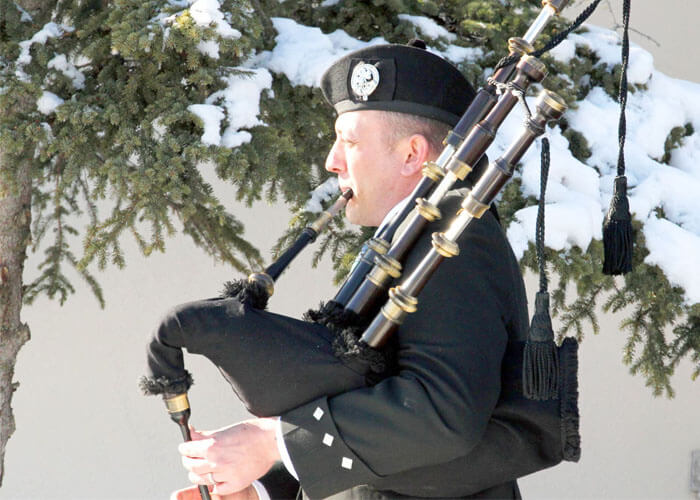
Bagpipe Medley: Understanding the Artistry Behind the Music
Bagpipe music is often recognized for its powerful, resonant sound that can stir emotions and captivate audiences. However, the artistry behind this unique instrument goes beyond mere sound. A bagpipe medley, a collection of tunes played in succession, is a testament to the skill and creativity of the piper. Understanding the intricacies of a bagpipe medley allows for a deeper appreciation of the musical journey it offers.
A well-crafted medley is a seamless blend of different tunes, often starting with a slow air or march before transitioning into more lively jigs or reels. The selection of tunes is crucial; each piece must complement the others while maintaining the overall flow and energy of the medley. The piper’s ability to switch between different rhythms and tempos with precision is a testament to their mastery of the instrument. This skillful transition between tunes is what makes a bagpipe medley not just a performance, but an artistic expression.
The emotional depth of a medley is another aspect that showcases the artistry behind bagpipe music. Each tune within the medley can evoke different feelings, from the solemnity of a lament to the joy of a lively dance tune. The piper must convey these emotions through their playing, making the listener feel the intended mood of each piece. This emotional connection is what turns a series of tunes into a cohesive and memorable musical experience.
Key Elements of a Bagpipe Medley:
- Tune Selection: Choosing tunes that complement each other in rhythm, key, and mood is essential for a cohesive medley.
- Smooth Transitions: The ability to seamlessly shift between tunes without disrupting the flow of music is crucial for maintaining the medley’s momentum.
- Dynamic Range: Varying the tempo and intensity of the tunes keeps the medley engaging and showcases the piper’s versatility.
- Emotional Expression: Conveying the emotions of each tune to the audience is key to creating a powerful musical experience.
- Technical Mastery: A piper must have full control over their instrument to execute the intricate fingering and timing required for a medley.
- Cultural Significance: Many medleys reflect cultural traditions and history, adding depth and context to the music.
In addition to the technical and emotional aspects, the cultural significance of a bagpipe medley cannot be overlooked. Many medleys are deeply rooted in the traditions of the piper’s homeland, reflecting the history and stories of the people. Whether it’s a Scottish Highland gathering or a festival in Ireland, the medley often serves as a bridge between the past and the present, preserving cultural heritage through music.
Understanding the artistry behind a bagpipe medley opens up a new world of appreciation for this ancient instrument. It’s not just about the sound, but the skill, emotion, and cultural significance that come together to create something truly special. A well-performed medley is a celebration of the piper’s artistry and the rich musical traditions they uphold, making it a captivating experience for any listener.
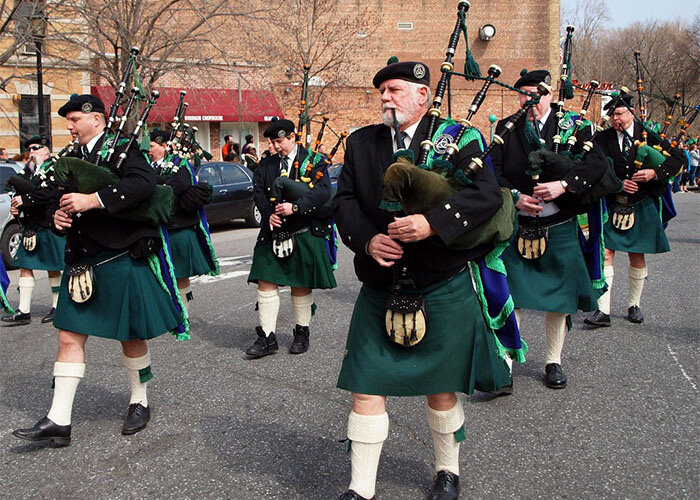
In conclusion
Bagpipes are often associated with Scotland and Ireland, both of which have rich traditions of this distinctive instrument. However, the origins and evolution of the bagpipes are more complex and intertwined than a simple national affiliation might suggest. While Scotland and Ireland have made significant contributions to bagpipe music, the instrument’s history spans multiple cultures and centuries, revealing a fascinating story of cross-cultural influence and adaptation.
The bagpipes’ roots trace back to ancient times, with evidence suggesting that similar instruments were played in various regions across Europe, the Middle East, and North Africa. Historical records and archaeological finds indicate that the basic concept of the bagpipe—an air-filled bag with pipes through which air is directed to produce sound—has been a part of various musical traditions long before Scotland and Ireland embraced it. This early history shows that while Scotland and Ireland are prominent in the modern narrative of bagpipe music, they are part of a broader, more intricate tapestry of bagpipe evolution.
In Scotland, the Great Highland Bagpipe is perhaps the most iconic version of the instrument. Its powerful, resonant sound has become synonymous with Scottish identity, especially in ceremonial and military contexts. The evolution of the Great Highland Bagpipe has been influenced by various historical events and cultural exchanges, reflecting Scotland’s own rich musical heritage and its interactions with neighboring cultures.
Similarly, in Ireland, the Uilleann Pipes represent a distinct and influential tradition. Known for their sweet, intricate sound, the Uilleann Pipes have a unique set of characteristics, including a bellows-operated bag and a wide range of tonal possibilities. The development of the Uilleann Pipes also reflects a blend of native and external influences, showcasing how the instrument adapted to and was shaped by different cultural contexts.
Despite the distinct characteristics of Scottish and Irish bagpipes, both traditions share common elements and historical connections. The exchange of musical ideas and techniques between these regions has enriched both traditions, highlighting how cultural boundaries can blur in the realm of music. The complex history of bagpipes illustrates how an instrument can transcend national identities, weaving together diverse influences to create a rich and evolving musical heritage.
In conclusion, while Scotland and Ireland have each developed their own unique bagpipe traditions, the origins of the instrument reveal a far-reaching and intertwined history. The bagpipe’s journey from ancient times through various cultures demonstrates that its legacy is not confined to any single nation but is instead a shared heritage that spans multiple regions. Understanding this broader context allows us to appreciate the bagpipes not only as symbols of Scottish and Irish culture but as part of a larger, global musical tradition.
